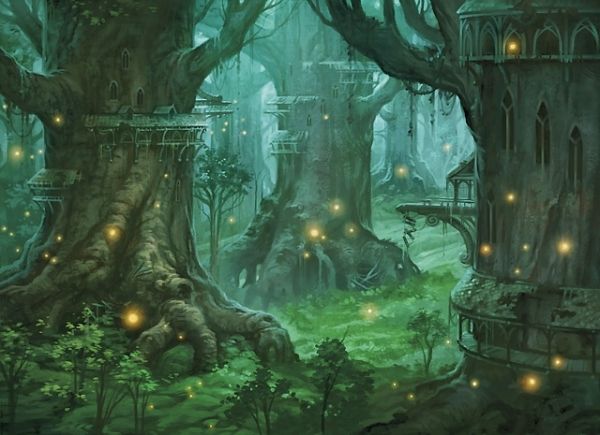Elvish Dire Chicken
Native to Minyabar, the Elvish Dire Chicken was brought to Kementari by the Elven exiles. It is a huge primarily ground bird with a gobbling call. It’s Elvish name is the Tor-cay.
Basic Information
Anatomy
Adults have long reddish-yellow to grayish-green legs. The body feathers are generally blackish and dark, sometimes grey brown overall with a coppery sheen that becomes more complex in adult males. Adult males have a large, featherless, reddish head, red throat, and red wattles on the throat and neck. The head has fleshy growths. The difference between an adult male and a juvenile is that the juvenile has a very short beard and his tail fan has longer feathers in the middle. The adult male's tail fan feathers will be all the same length. When males are excited, a fleshy flap on the bill expands, and this, the wattles and the bare skin of the head and neck all become engorged with blood, almost concealing the eyes and bill. Each foot has three toes in front, with a shorter, rear-facing toe in back; males have a spur behind each of their lower legs.
Males have a long, dark, fan-shaped tail and glossy bronze wings. Dire Chickens exhibit strong sexual dimorphism. The male is substantially larger than the female, and his feathers have areas of red, purple, green, copper, bronze, and gold iridescence. The preen gland is also larger in males compared to female ones. Females have feathers that are duller overall, in shades of brown and gray. The primary wing feathers have white bars.
Tail feathers are of the same length in adults, different lengths in juveniles. Males typically have a "beard", a tuft of coarse hair (modified feathers) growing from the center of the breast. Beards average 9" in length.
Genetics and Reproduction
Males are polygamous, mating with as many hens as they can. Male Dire Chickens display for females by puffing out their feathers, spreading out their tails and dragging their wings. This behavior is most commonly referred to as strutting. Their heads and necks are colored brilliantly with red, white, and blue. The color can change with the turkey's mood, with a solid white head and neck being the most excited. They use gobbling, drumming/booming and spitting as signs of social dominance, and to attract females. Courtship begins during the months of Sowmath and Plantmath, which is when they are still flocked together in winter areas.
Males may be seen courting in groups, often with the dominant male gobbling, spreading their tail feathers (strutting), drumming/booming and spitting.
When mating is finished, females search for nest sites. Nests are shallow dirt depressions engulfed with woody vegetation. Hens lay a clutch of 10–14 eggs, usually one per day. The eggs are incubated for at least 28 days. The poults leave the nest in about 12–24 hours.
Dietary Needs and Habits
Dire Chickens are omnivorous, foraging on the ground or climbing shrubs and small trees to feed. They prefer eating acorns, nuts and other hard mast of various trees, including hazel, chestnut, hickory, and pine as well as various seeds, berries such as juniper and bearberry, roots and insects. They also occasionally consume amphibians and small reptiles such as lizards and small snakes. Poults have been observed eating insects, berries, and seeds. They often feed in cow pastures, and favor croplands after harvest to scavenge seeds on the ground. They are also known to eat a wide variety of grasses.
Dire Chicken populations can reach large numbers in small areas because of their ability to forage for different types of food. Early morning and late afternoon are the desired times for eating.
Additional Information
Perception and Sensory Capabilities
Despite their weight, Dire Chickens are agile, fast fliers. In ideal habitat of open woodland or wooded grasslands, they may fly beneath the canopy top and find perches. They usually fly close to the ground for no more than a quarter mile.
They have very good eyesight, but their vision is very poor at night. They will not see a predator until it is too late. At twilight most will head for the trees and roost well off the ground, up to 50': it is safer to sleep here in numbers than to risk being victim to predators who hunt by night. Because Dire Chickens don't migrate, in snowier parts of the species's habitat, it is very important for this bird to learn to select large conifer trees where they can fly onto the branches and shelter from blizzards.
Scientific Name
Meleagris gallopavo
Average Weight
Males average 17 lbs. Females average 9 1/2 lbs.
Average Length
Males average 44" long, females 34" long, with wingspans of just under 4 1/2 feet.
Remove these ads. Join the Worldbuilders Guild



Comments